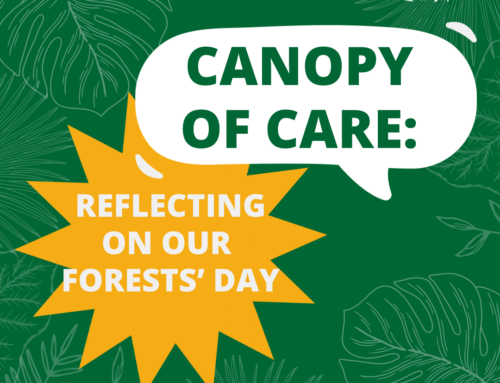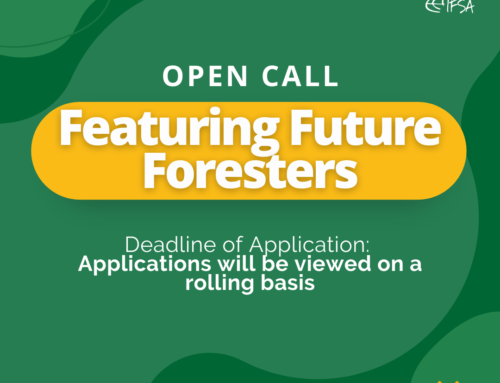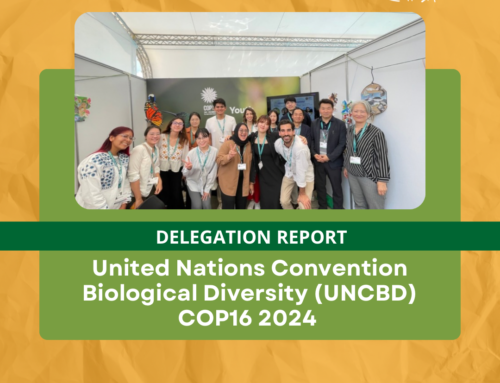Canadian American Regional Meeting
OSU 2023 – Event Report
1. Background and summary of the event
This year, Oregon State University’s Local Committee (OSU LC) organized the Canadian American Regional Meeting (CARM) from March 25th to April 1st in Corvallis, Oregon, USA. The event’s main objective was to strengthen the student network across the North American Region and discuss topics related to forests and forestry issues with a collaborative and global perspective. In addition, while IFSA has flourished in other parts of the world, it is yet to grow fully in North America. Acknowledging this fact, one of the objectives of the event was to engage new members in IFSA and increase leadership and networking across North American universities.
The event took place in different parts of Oregon. Corvallis has easy access to OSU’s McDonald and Dunn Research Forests, and the Peavy Arboretum. Other important forests across the State included the H.J. Andrews Experimental Forest (OSU), Crater Lake National Park (US National Park Service), and the Jedediah Smith Redwoods State Park (California State Parks). These forests contain various ongoing research projects and management systems where scientists, practitioners, and students conduct fieldwork. We visited these places to witness the wonders of the Pacific Northwest temperate rainforest ecosystem.
Besides Oregon State, seven other universities attended CARM, including Mississippi State University, Yale University, Northern Arizona University, Laval University, University of Alberta, University of British Columbia, and University of Northern British Columbia.

Visiting the William L. Finley National Wildlife Refuge to talk about oak savanna restoration
2. Event details
The event included an array of indoor and outdoor learning sessions. The detailed itinerary can be found on the CARM 2023 official website. Some of the highlights of the event were the opening ceremony, where our president, Claudio Guevara, and the Dean of the OSU College of Forestry, Dr. Thomas DeLuca, gave opening remarks about forests in North America, their experience as IFSA members, and how we can advance IFSA engagement in North America. Another highlight was Dr. Rajat Panwar’s talk on deforestation-free supply chain commitments and why corporate initiatives fail to reduce deforestation. Dr. Gail Woodside shared how OSU has been starting to acknowledge and promote Indigenous Knowledge amid the modernization-related challenges faced by Indigenous Peoples. Similarly, the “Mental Health and Climate Change” workshop and the “Hope for the Future” panel discussion provided students with new perspectives amid climate change challenges as well as information on how we can share our knowledge with general audiences. Outdoor activities included logging sports with the OSU Logging Sports team, snowshoeing in Crater Lake National Park to understand better winter ecology, and a tree climbing workshop where participants had the opportunity to climb trees on campus. These experiences were new to most participants and provided a good mix of knowledge, skills, and fun for everyone.
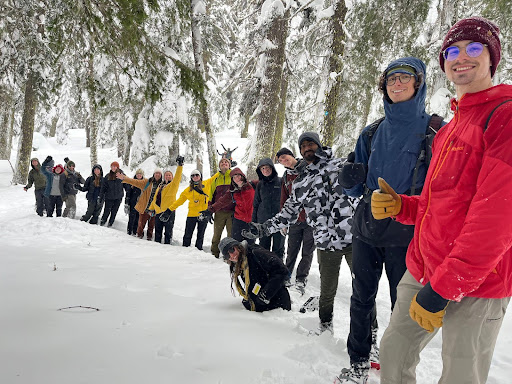
Snowshoeing at Crater Lake National Park while discussing ecosystem dynamics during winter
3. Forest-related learning from the event
- Adaptive and collaborative forest management
The visit to the Oak Savanna restoration site at William L. Finley National Wildlife Refuge gave insight into the importance of the last remaining intact wet prairies, which consist of a diverse array of flora, fauna, and funga such as golden paintbrush, Canada geese, Bradshaw’s desert parsley, and many migratory waterfowls. In addition to restoring the habitat at the Refuge, the visit at Willow Creek Preserve and Crater Lake National Park also discussed how they promote diversity. For example, allowing natural disturbances -such as fire- to play their traditional roles. The experts at those sites shared that they are working with multiple agencies, such as the Oregon Department of Forestry, to ensure that their management of forests does not endanger wildlife and neighboring communities.
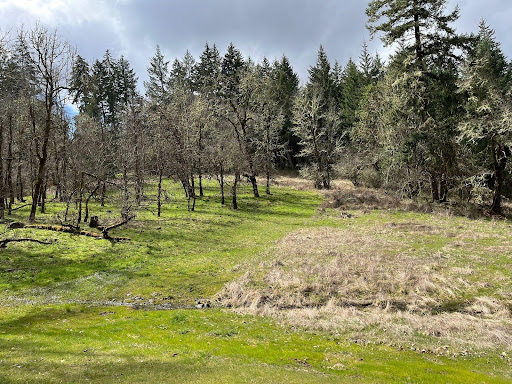
An important lesson for us was a growing acceptance of fire as a natural component of the ecosystem. All the sites we visited shared that fire suppression in the recent decades facilitated alteration to more vulnerable forest types to drought and fire and increased the fire risk by accumulating fuel loads and creating a fire hazard. So, the agencies are trying to reintroduce fire, such as by prescribed or controlled burning, to foster heterogeneity in forests and reduce forest fuels. However, they shared that because of the likelihood of uncontrolled fire due to flying embers and resulting liability, the stakeholders hesitate to undertake or approve controlled burning. Willow Creek Preserve (pictured above), which The Nature Conservancy has managed, has benefited from years of prescribed burns and has been demonstrating how a bathtub model of prescribed burning is used to maintain a healthy natural ecosystem.
We visited a commercial forest plantation owned by Starker Forests Inc., a local timber company initiated by one of the first graduates from the OSU College of Forestry. During this visit, we learned how plantations aim to maximize timber supply sustainably, although it was evident that the definition of sustainable forest management differed across the stakeholders. The Forest managers like the Starker Forests emphasize the ability to supply timber as an indicator of sustainable forest management continuously. They also highlighted the difference between the family-owned forests, such as their company, and other publicly traded companies. The former have more flexibility and have an ability to better respond to social expectations (e.g. opening up the forest for general people for recreation) and market fluctuation (e.g. pause in the harvest of certain species when the price is low), while the latter are usually more driven by market pressures.
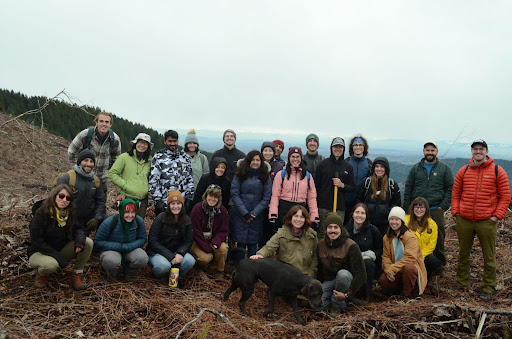
Visiting Starker Forests land to talk about sustainable forest management and reforestation.
Similarly, at the Redwood National and State Park in California, we learned how a degraded forest that was clear-cut harvested and densely planted could be restored by applying silvicultural treatments, particularly thinning and prescribed burns. Ecosystem restoration is critical for preserving wildlife habitat, increasing diversity, providing goods and services, and enhancing resilience against climate change. We learned that logging roads were being removed because of the increased sediment production and soil erosion that translates into altered streams and rivers on which salmon and other aquatic species depend. Similarly, we learned that it is not always easy to get approval from concerned authorities to apply burning treatments, but clear and strategic communication is helpful.
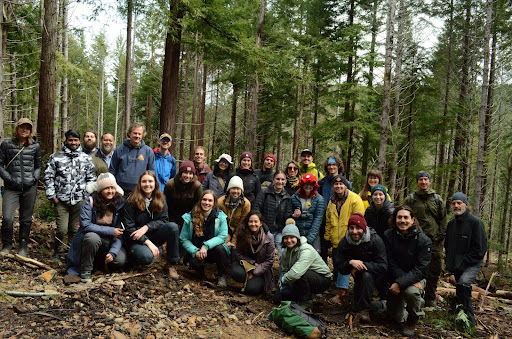
Visiting Mill Creek (California State Parks) to learn about redwood restoration practices
- Research and demonstration on adaptive forest management
We visited two research sites- McDonald-Dunn Forest and H. J. Andrews Experimental Forest- to learn about studies on adaptive forest management. At the former site, we learned about different harvesting systems in a Douglas-fir (Pseudotsuga menziesii) plantation to foster heterogeneity and the diversity of traits, acknowledging that forests are complex adaptive ecosystems. We learned about the vulnerabilities of the single-species, homogenous plantations and ongoing efforts to bring diversity despite some hesitation among forest managers, who seem to prefer homogeneity for ease of management.
Likewise, at the H. J. Andrews Forest, we learned about long-term research (with some research being conducted for up to 75 years) on different aspects of forests, such as the impact of climate change on forest growth (including old-growth), wildlife habitat monitoring, and the relationship between wildfire, water supply, and forest growth. Additionally, the researchers that showed us the forest -Drs. Julia Jones, Matthew Powers, and Frederick Swanson- explained the use of high-tech sensors to monitor micro-climates and the confluence of arts and social sciences to help communicate the importance of old-growth forests to the broader public.

Old-growth forest at the H. J. Andrews Experimental Forest where we learned about the importance of long-term research, interdisciplinarity, and science-informed policies
4. The Success of the event
Overall the event was both very educational and fun! Here are a few testaments that the participants of the Canadian American Regional Meeting shared:
“CARM was a fantastic experience in forestry and a great opportunity to meet new people! The days were very dense with informational and inspiring activities I got to participate in with some awesome people!”
Luke McDonald, Oregon State University


“CARM was amazing! I could meet new friends and see beautiful places I have never seen before. It was such a great learning experience and I feel so lucky to have gotten to go!”
Emmie Vander Pluym, Northern Arizona University
“This was a great experience that gave me a new perspective on college. It was great to hear that a diverse array of majors can go into forestry.”
Ellie Amato, Oregon State University
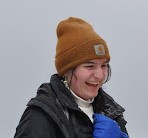

“My experience with CARM was incredible! I got to learn about forestry in Oregon and got to meet the most amazing likeminded people from all over North America. One of my favorite things was going to see the Redwoods. I can’t wait to attend CARM next year!”
Madi Lieske, University of Alberta
“I thought it was a great event! It was a cool way to meet new people interested in sustainability and conservation. I particularly enjoyed the climate change and mental health talk, the tree climbing, and the continuity of talking about the oak savanna. I am so thankful for the opportunity to join and meet so many great people, and will be sure to encourage new students to attend CARM next year and share the experience! Thank you so much to the OSU team for their hard work!”
Amity Dixon-Traer, University of Northern British Columbia


“Recently, I attended the CARM 2023 and it was an amazing experience of my life. The management of the CARM was great and I am inspired by the people who arranged everything and managed it. We visited different forest types and restoration systems and it was a great time to learn new things and forest management.”
Nasir Qadir, Mississippi State University
5. Impact on Reinvigorating the North America Region
One of the main reasons for organizing CARM was to strengthen the networking between the IFSA LCs in North America and to encourage other universities to start new LCs. By participating in different social events, we were able to develop a long-lasting connection with one another, evolving into friendships that may last their entire lives. We organized three events that were vital in strengthening the connection among participants: the forests across the continent (United States and Canada), the international night, and the IFSA elections.
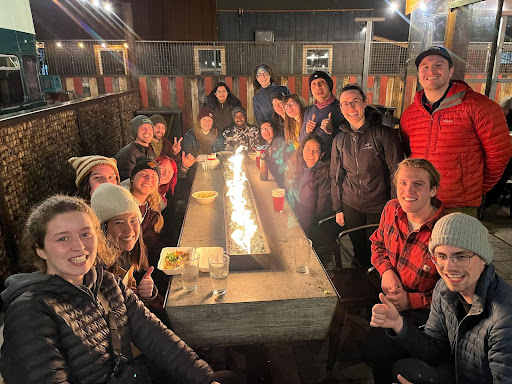
Hanging out and building friendships after our first night of road trip across Oregon
In the Forests across the Continent event, participants from each university presented briefly on the forest and forest-related topics in their region. They shared about the geographical uniqueness, policies around forest management and silviculture, important forest products in their region, and so on. It was a very informative and interactive session where participants not only learned about forests of other regions but also had the opportunity to interact through multiple questions and answers sessions that followed.
In the international night event, attendees from different universities in North America showcased their food, tradition, dance, culture, and unique features about their country/ region. We drank special milk tea from Nepal, practiced line dance shown by the students from the University of Alberta, drank maple syrup brought by Laval University, and learned interesting facts about Chile, Mexico, and Pakistan as we represented cultures beyond the North American borders. Overall the night ended up being very fun and a great opportunity to learn about each other’s culture, traditions, and unique geography.
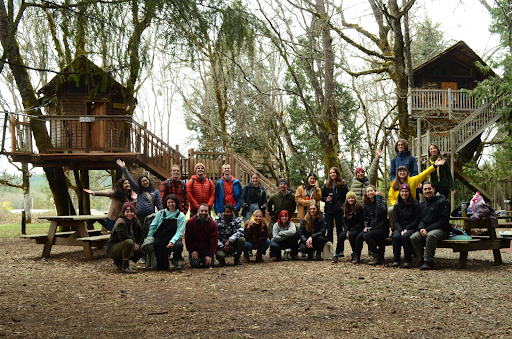
Staying at tree houses in southern Oregon was so much fun. Perfect for a group of tree lovers!
Finally, the IFSA elections were held during CARM to pass the torch to the 2024 CARM Organizing Committee and the new Regional Representatives (RRs) for the coming year. The RRs have been instrumental in bridging the gap between the IFSA world and the North American LCs through the constant sharing of information and organizing informal gatherings. The election results were announced during the event: Laval University will host CARM 2024, and the two newly elected RRs are: Marie-Pier Charbonneau-Majeau (Laval University) and Nasir Qadir (Mississippi State University). We congratulate these fearless leaders and are very excited to see the activities they will come up with this coming year!

Group picture at Crater Lake National Park with our knowledgeable guide, Ranger Dave Grimes
Overall the event helped gain and share information about forests, natural resources, and related fields in North America and helped strengthen the relationship between students and LCs, including the opening of a new IFSA LC at Northern Arizona University (soon to be completed!). We are very proud of having taken the opportunity to host CARM 2023 at Oregon State University. We are very grateful to everyone who attended for having trusted us and for their beautiful messages once we said our goodbyes. We are sure we will see each other soon. The IFSA family continues to grow!
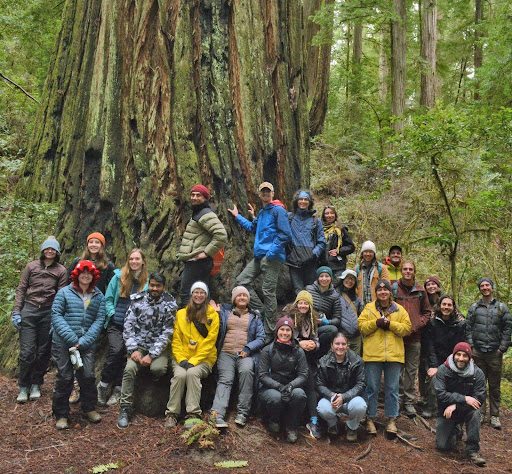
Visiting the Jedediah Smith Redwood State Forest during our last day of the road trip. The group enjoyed walking among these giant trees and took time to practice mindfulness meditation
Written by Kamana Poudel, Lok Mani Sapkota, Zoey Lorenz, and Claudio Guevara
Pictures by Claudio Guevara

